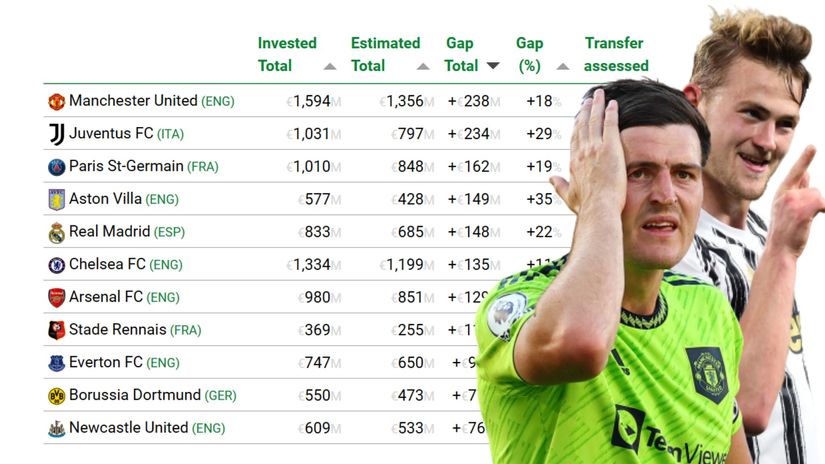Sometimes it doesn’t take much time to conclude that a club has overpaid for a new signing, or that it has grabbed a great player at a cheap price. The famous Football Observatory from Neuchâtel (CIES) using its exclusive statistical model and the money allocated by the clubs for compensation, offered us a list of clubs that in the last decade, i.e. since 2012, invested much more money than was realistic in buying footballers.The study is of course based on clubs from the five strongest European leagues, and at the top of the list of those who overpaid players the most are Manchester United. It makes sense when we remember that with 87 million euros, the Red Devils made Harry Maguire the most expensive defender in the history of football; that, for example, they paid Fred 59 million, Romelu Lukaku 84.7 million. Since United spent the most money (1,594,000,000) in the last 10 years, it is somewhat logical that it should be at the top of the list. CIES estimates that the Old Trafford giants fetched 238 million more than the objective value of the players they brought in.However, it seems that Juventus still made worse moves because it spent half a billion less, and had an imbalance of 234,000,000 euros, only 4 million less than United. The Old Lady spent 85.5 million on Matthijs De Ligt, 76 million on Arthur Melo, 40 million on Federico Bernardeschi, 29.4 million on Marko Pjaca…©CIESHowever, there are also clubs that, compared to the amount of investment, have made more mistakes than United or Juventus. Let’s say, Rennes spent 369,000,000 for new signings, for which CIES believes that 255,000,000 should have been allocated, and expressed as a percentage, it decreased by 45 percent. Aston Villa also cannot boast of a great transfer policy in the last decade with a ratio of 577,000,000 – 428,000,000, which is an overpayment of 35 percent.Of course, some got more for less, and in that group you can find famous names such as Atlético Madrid, Barcelona and Tottenham.Note 1: Transactions concluded with the activation of buy-out clauses or clauses of optional and mandatory purchase are not included in the analyzed sampleNote 2: The first column in the table refers to money invested in transfers, the second to CIES’ estimated value of footballers, the third is the difference between the first two columns, the fourth is the imbalance percentage, and the fifth is the number of completed transfers©CIES

